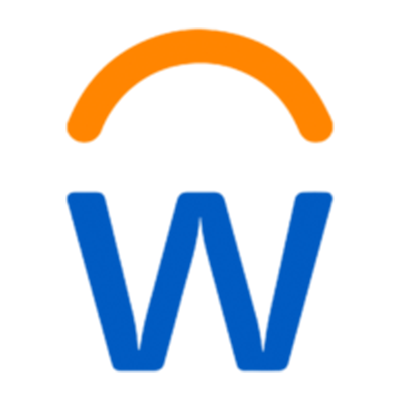Working together to work remotely
Business continuity is a by-product of fostering resilience in your company and culture.
The thing about unprecedented events is that they don’t come with a playbook.
The gravity of the COVID-19 pandemic wasn’t fully obvious until it was. What seemed like a fairly remote threat quickly became an unwelcome intruder into our ways of working, learning, and living.
As a company, we couldn’t have imagined the scale of COVID’s impact, or how rapidly things would escalate. Even now, we can’t predict how it’ll all shake out – but, then again, who can?
No-one could reassure everyone with a “Here’s how we handled this last time …” because it was all new. Scarily so.
But one thing we were clear on was our obligation to take care of our people. If we managed that successfully, we knew we’d be better placed to take care of our customers and their users too.
In any given month, our technology is used by millions to learners to take formative and summative tests. Whether they’re taking these tests on desktops or mobile devices, they’ve come to expect total reliability – and we deliver.
One thing we were clear on was our obligation to take care of our people. If we managed that successfully, we knew we’d be better placed to take care of our customers and their users too. Share on XBut maintaining that put us in a race against a speedy, slippery foe. We knew it wasn’t going to be just a matter of keeping the motor running. Disruption was inevitable, so we planned to meet it on our own terms by staying nimble, taking stock, and re-orienting how we operated. (Enter stage left, CRT [aka “Coronavirus Response Team”]💪).
What makes work, work?
Learnosity’s workforce is distributed globally, so we imagined what disruption might look like for our people as well as our product. This helped us identify three critical pillars for business continuity:
- Technical
- Collaborative
- Cultural (i.e personal & social)
Getting technical
As a tech company, we benchmark ourselves against the industry’s highest standards, not just those in edtech. Obviously that goes for our products, but it runs right down to how we operate on a granular level.
Remote working has been an embedded part of our work culture for some time, which meant not a lot had to change in many respects. It was more about checklisting to make sure everyone was set up properly with access to the right equipment, tools, platforms and the appropriate licencing levels to use them. We ran ergonomic checks too, asking that people send in pics of their workstation setups so we could help optimize them (cute pets in pics weren’t obligatory, just encouraged 😊 ).


Collaboration in the time of COVID
A much bigger threat was the potential for COVID to disrupt our ways of working together.
With the freedom to simply pop your head over a colleague’s monitor to discuss a project now gone (for the time being), we had to find meaningful ways of filling the gap.
All good teams are more productive when communication is clear and they feel connected to their purpose. After the sudden loss of a shared physical space, there’s a natural urge to ramp up communication, which meant we had to be wary of information overload. Conversely, we also needed to watch for signs of disconnection or radio silence.
We use collaborative tools like Slack, Zoom, Whereby, G-Suite, and Confluence in our day-to-day (now more than ever!). They’re all great, but it can be a challenge to configure them so they work for us, not against us.
To save people time, we set up a knowledge hub where teams could find guides to learn more about setting up these tools to better organize projects, information, brainstorms, reminders, meetings, and so on – basically anything that made life easier and more productive.
Offering some additional support helped minimize distraction so that whenever team members sat at their desks, they could focus their attention on quality output.
However, reading is a one-way interaction and people learn in many different ways. Some prefer to talk things over as they go through material, so we organized one-on-one “Ways of working” sessions to accommodate anyone who wanted a more hands-on, interactive approach (or just liked to chat!).
These sessions covered everything from managing notifications to improving folder management.
It’s basic stuff, but we knew that people weren’t opting to work from home, they were obliged to work at home.
Suddenly having to juggle domestic tasks or family life with everyday work commitments was a jolt to the system for many of us. Offering some additional support helped minimize distraction so that whenever team members sat at their desks, they could focus their attention on quality output.
Keeping the culture going
Working remotely has its perks but blurring the lines between work and life carries a risk of burnout. The standard triggers for stopping and taking a breather are gone. Morning routines and evening wind-downs are upended. If you’re not careful, you can easily find that your typical 9 to 5 morphs into a 7 to 11.
Do the right thing
Avoiding burnout is possible as long as you remain sensitive to the needs of employees – whether as carers, parents, students, or partners.
What this looked like in practice for us was a series of “soft” supports like wellbeing and counseling services, WFH tips for parents, and guidelines to help managers support their teams better. We accommodated for personal circumstances wherever possible and did something simple but extremely important: we made ourselves available to anyone who needed to talk.
It’s good to talk
Keeping the lines of communication open across the company is vital at the best of times, let alone at the strangest, most uncertain of them.
This is 100% true on an individual level, but the company had a larger role to play in providing some stability and familiarity. So we increased the internal comms from our founders, Gav and Mark, to keep everyone up-to-date on how the company was responding to COVID, but also on general company news and recent successes.
Avoiding burnout is possible as long as you remain sensitive to the needs of employees – whether as carers, parents, students, or partners. Share on XThis was good for business continuity, but it also ensured cultural continuity too – the very DNA of who we are as a company.
Even though the situation we found ourselves in was new, we made the effort to keep certain office traditions going. Like birthdays, where instead of cake in the office, we delivered cake to people’s homes! Or celebrations like surprise baby showers for proud mums-to-be (best of luck Rachel and Aoife!). We also put aside time in everyone’s calendar for optional daily social calls to give people a chance to catch up.
Always be learning
Continuous learning is yet another cornerstone of Learnosity’s culture – as a matter of fact, it’s one of our core values. To create better experiences for all learners, we need to be learners ourselves, so all employees are given time and budget to spend on their professional development.
Using the right technology in the right way has helped keep our focus on education, externally with our clients, and internally with our employees.
Our monthly Live to Learn (LTL) sessions are a chance for people to deepen their knowledge in an area of interest. Typically this meant joining others in a dedicated room to watch, listen to, or read whatever took your fancy while enjoying some popcorn or pastries in the process –a bit like a silent disco for learners!
To keep these sessions going, we had to pivot online. We’re lucky to have tools available that let us continue to grow, progress, and connect. Using the right technology in the right way has helped keep our focus on education, externally with our clients, and internally with our employees.

What does success look like?
In truth, it’s hard to talk about “success” when no one’s yet out of the woods, and it’s still unclear when that will happen.
But all things considered, Learnosity is in a good place. Even though we worked hard to minimize any post-COVID turmoil for employees and customers, we’ve been forging our resilience as a company for years. It’s as evident in our processes as it is our products.
The pandemic has been a test of our mettle, but we managed to keep things fully operational, and then some.
One example of how well our teams have adapted to the crisis is our latest batch of releases, which might be our best ever.
And there was also the not-so-small matter of our role in delivering one of the largest projects ever seen in edtech: a nation-wide rollout in the Middle-East of Learnosity-powered online assessment.
In overcoming the technical challenges of implementation in a region with poorly developed infrastructure and delivering 500,000 assessments per day, we fulfilled another company value to always aim higher.
Our mission since day one has been to drive the edtech industry forward by providing a new standard of technology to build with. The circumstances may have changed, but the song remains the same.











